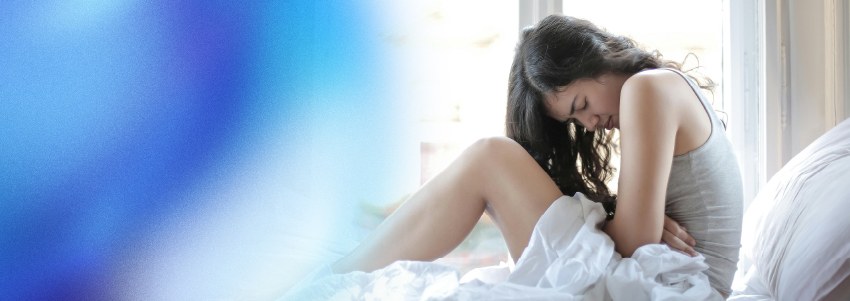Dr. Liz Bartman

Uterine fibroids (UFs) are noncancerous growths affecting up to 70% of women in their reproductive years. Around 50% of affected women are asymptomatic, while 20-30% can experience debilitating symptoms. Black women are 3x more likely to be affected than women of other ethnicities and can be seen to have more extreme symptoms, often requiring surgery.
Symptoms of UFs include pelvic fullness, abnormal uterine bleeding, reproductive issues, heavy menstrual flow, increased urinary frequency, and anemia. A comprehensive evaluation involves assessing UF size and location, considering age, symptoms, pregnancy desires, and treatment access.
Diagnostic steps include a physical exam, endometrial biopsy, pelvic ultrasound, and laboratory tests. Genetic factors, such as variants in COMT and CYP17, are associated with UF development. Various treatment modalities are considered based on symptoms and fertility desires, including medications, surgical procedures, and noninvasive treatments.
Research is ongoing for natural support options, such as Vitamin D2, EGCG, berberine, curcumin, dietary modifications, acupuncture, and Chinese formulations.
The combination of Vitamin D2 and EGCG shows the most promising results in preventing fibroid growth and reducing symptoms.
Research has shown that a diet rich in antioxidant fruits and vegetables, higher in fiber, and lower in red meat and refined or processed foods can reduce both the development and growth of a UFs. Environmental avoidance of bisphenols and xenoestrogens, as well as reducing carbon monoxide exposure, may impact UF growth. Acupuncture and Chinese formulations have shown improvements in symptoms and UF size.
Conventional treatments can support symptoms, but aside from surgery, very few medication options will fully resolve a UF. Ongoing research offers hope for evolving natural support options tailored to individual needs, emphasizing the importance of collaboration between patients and healthcare professionals.
Uterine fibroids are a common gynecological condition that can significantly impact a woman’s quality of life. While conventional medical treatments are available, an increasing number of women are exploring natural approaches to manage their fibroids and alleviate associated symptoms. Dietary modifications, herbal remedies, lifestyle changes, alternative therapies, and mind-body practices all hold promise in providing natural support for uterine fibroids.
It is crucial to note that the effectiveness of these natural approaches varies from person to person, and scientific research is ongoing to better understand their mechanisms of action. Before embarking on any natural treatment regimen, it is advisable for clinicians to work in collaboration with a patient’s OB/Gyn to ensure all treatment options or weighed effectively and a safe and supportive program is initiated for the patient. With ongoing research, there is hope that natural support options for uterine fibroids will continue to evolve, providing more effective and personalized solutions for women dealing with this condition.
References
- Erica E. Marsh, Ayman Al-Hendy, Dale Kappus, Alex Galitsky, Elizabeth A. Stewart, and Majid Kerolous. Burden, Prevalence, and Treatment of Uterine Fibroids: A Survey of U.S. Women Journal of Women’s Health 2018 27:11, 1359-1367
- Stewart EA, Cookson CL, Gandolfo RA, Schulze-Rath R. Epidemiology of uterine fibroids: a systematic review. BJOG. 2017 Sep;124(10):1501-1512. doi: 10.1111/1471-0528.14640. Epub 2017 May 13. PMID: 28296146.
- Yang, Q., Ciebiera, M., Bariani, M., Ali, M. Comprehensive review of uterine fibroids: developmental origin, pathogenesis, and treatment. (n.d.) Retrieved October 1, 2023, from academic.oup.com/edrv/article-abstract/43/4/678/6422392
- Othman EE, Al-Hendy A. Molecular genetics and racial disparities of uterine leiomyomas. Best Pract Res Clin Obstet Gynaecol. 2008 Aug;22(4):589-601. doi: 10.1016/j.bpobgyn.2008.01.014. Epub 2008 Mar 25. PMID: 18373954; PMCID: PMC4171730.
- Vilos GA, Allaire C, Laberge PY, et al. The management of uterine leiomyomas. J Obstet Gynaecol Can. 2015;37(2):157-181.
- . Ulin, M., Ali, M., Chaudhry, Z., Al-Hendy, A. [HTML][HTML] Uterine fibroids in menopause and perimenopause. (n.d.) Retrieved October 1, 2023, from www.ncbi.nlm.nih.gov/pmc/articles/PMC6994343/
- 7 4. Lewis, T., Malik, M., Britten, J., San Pablo, A. [HTML][HTML] A comprehensive review of the pharmacologic management of uterine leiomyoma. (n.d.) Retrieved October 1, 2023, from www.hindawi.com/journals/bmri/2018/2414609/abs/
- 14 11. Peddada SD, Laughlin SK, Miner K, Guyon JP, Haneke K, Vahdat HL, Semelka RC, Kowalik A, Armao D, Davis B, Baird DD. Growth of uterine leiomyomata among premenopausal black and white women. Proc Natl Acad Sci U S A. 2008 Dec 16;105(50):19887-92. doi: 10.1073/pnas.0808188105. Epub 2008 Dec 1.
- Di Spiezio Sardo, A., Mazzon, I. Hysteroscopic myomectomy: a comprehensive review of surgical techniques. (n.d.) Retrieved October 1, 2023, from academic.oup.com/humupd/article-abstract/14/2/101/609051
- Yao X, Stewart EA, Laughlin-Tommaso SK, Heien HC, Borah BJ. Medical therapies for heavy menstrual bleeding in women with uterine fibroids: a retrospective analysis of a large commercially insured population in the USA. BJOG. 2017 Jan;124(2):322-330. doi: 10.1111/1471-0528.14383. Epub 2016 Oct 21.
- Hartmann KE, Fonnesbeck C, Surawicz T, et al. Management of Uterine Fibroids [Internet]. Rockville (MD): Agency for Healthcare Research and Quality (US); 2017 Dec. (Comparative Effectiveness Review, No. 195.) Available from: https://www.ncbi.nlm.nih.gov/books/NBK537742/
- Lukes AS, Moore KA, Muse KN, Gersten JK, Hecht BR, Edlund M, Richter HE, Eder SE, Attia GR, Patrick DL, Rubin A, Shangold GA. Tranexamic acid treatment for heavy menstrual bleeding: a randomized controlled trial. Obstet Gynecol. 2010 Oct;116(4):865-875
- Steward, EA. Uterine fibroid (leiomyomas): Treatment overview. In: UpToDate, Post TW (Ed), UpToDate, Waltham, MA. (Accessed on October 3, 2023.)
- Arjeh S, Darsareh F, Asl ZA, Azizi Kutenaei M. Effect of oral consumption of vitamin D on uterine fibroids: A randomized clinical trial. Complement Ther Clin Pract. 2020 May;39:101159.
- Roshdy E, Rajaratnam V, Maitra S, Sabry M, Allah AS, Al-Hendy A. Treatment of symptomatic uterine fibroids with green tea extract: a pilot randomized controlled clinical study. Int J Womens Health. 2013 Aug 7;5:477-86.
- Porcaro G, Santamaria A, Giordano D, Angelozzi P. Vitamin D plus epigallocatechin gallate: a novel promising approach for uterine myomas. Eur Rev Med Pharmacol Sci. 2020 Mar;24(6):3344-3351.
- Afrin S, AlAshqar A, El Sabeh M, Miyashita-Ishiwata M, Reschke L, Brennan JT, Fader A, Borahay MA. Diet and Nutrition in Gynecological Disorders: A Focus on Clinical Studies. Nutrients. 2021 May 21;13(6):1747
- Zhou F, Zhang L, Liu A, Shen Y, Yuan J, Yu X, Feng X, Xu Q, Cheng C. Measurement of phenolic environmental estrogens in human urine samples by HPLC-MS/MS and primary discussion the possible linkage with uterine leiomyoma. J Chromatogr B Analyt Technol Biomed Life Sci. 2013 Nov 1;938:80-5. doi: 10.1016/j.jchromb.2013.08.032. Epub 2013 Sep 5. PMID: 24060595.
- Wesselink AK, Rosenberg L, Wise LA, Jerrett M, Coogan PF. A prospective cohort study of ambient air pollution exposure and risk of uterine leiomyomata. Hum Reprod. 2021 Jul 19;36(8):2321-2330.
- Mehl-Madrona L. Complementary medicine treatment of uterine fibroids: a pilot study. Altern Ther Health Med. 2002 Mar-Apr;8(2):34-6, 38-40, 42, 44-6.


